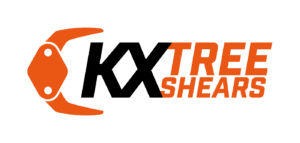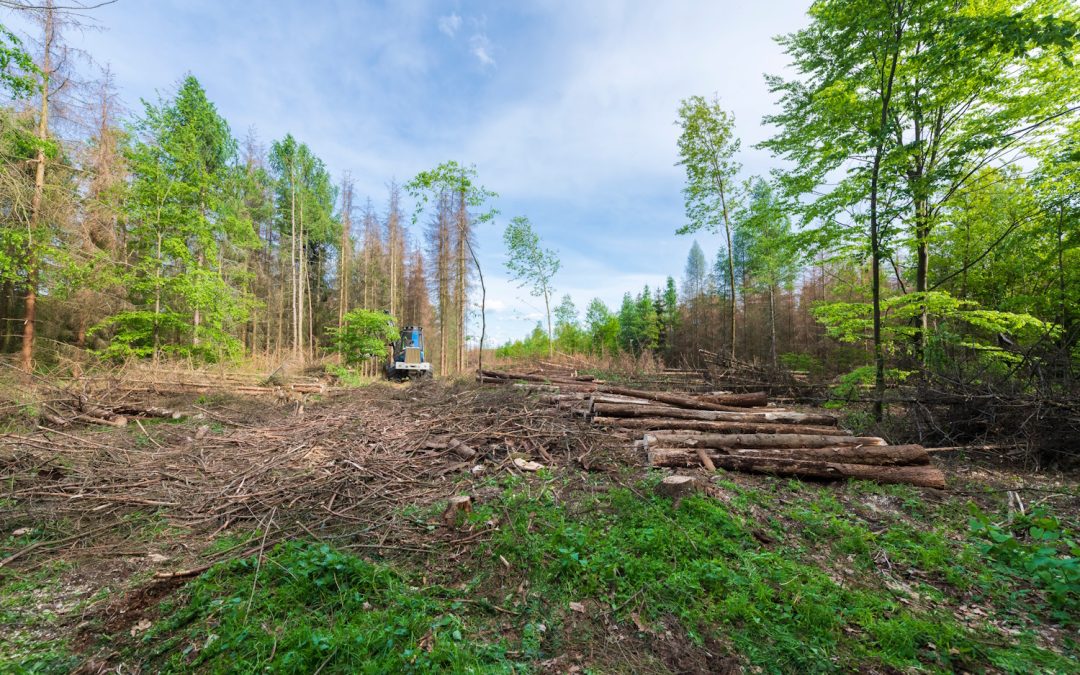Forest clearing is an essential part of forest management, as it enhances tree growth, quality, and productivity. Well-executed clearing can significantly impact the landscape, biodiversity, and timber production.
Forest clearing is a planned process that ensures the forest develops in the desired direction. The scope and method of clearing depend on whether it involves a young stand, a mature forest, or a landscape management site. Properly timed clearing is an effective way to maintain the forest’s vitality in the long term.
What Does Forest Clearing Mean?
Forest clearing involves removing unwanted or poor-quality trees from a forest area. It enables better growth for the remaining trees by reducing competition for light, water, and nutrients.
Clearing may involve removing, for example:
- Damaged or unhealthy trees
- Trees growing too densely or in the wrong location
- Undesirable tree species
- Shrubs and other vegetation that hinder tree development
Clearing is carried out at various stages of a forest’s lifecycle. It is not primarily about harvesting timber for sale but about improving growth conditions. The main goal of clearing is to increase future harvesting revenues and maintain forest health.
Planned, regular clearing can improve the quality of the stand and increase the forest’s value. It can also reduce the risk of pest insects and diseases. Clearing helps prevent trees from falling due to wind or snow load. Additionally, it enhances the forest’s recreational use by opening up the landscape.
Best Time for Forest Clearing
The timing of forest clearing depends on its objectives. Properly timed clearing makes the work easier and provides more benefits. The best time depends on the forest’s developmental stage and weather conditions.
Spring and Early Summer
Clearing in spring, before or just after leaves emerge, is popular because visibility is not obstructed by foliage, making it easier to identify trees to be removed. However, spring is often wet, which can affect machine movement in soft terrain.
Late Summer and Autumn
Another good time is after the leaves have fallen and the growing season has ended. This reduces the risk of regrowth. Additionally, moving through the forest is easier if the ground is drier or partially frozen.
Winter
Clearing can also be done in winter during snow-free periods. Movement in the forest is easier, and the risk of regrowth is minimal since growth is dormant.
Forest Clearing – Step-by-Step Guide
Forest clearing is a process of removing unwanted or poor-quality trees to allow the remaining trees to grow in better conditions. Clearing should be carried out systematically.
1. Defining the Objective
Before starting, it’s crucial to define the goals of the clearing. The purpose affects what trees are left to grow, how dense the stand should be, and what tools to use.
First, determine the forest’s developmental stage—whether it’s thinning a young stand or managing a mature forest. Is the goal to grow valuable timber, harvest energy wood, or clear field or road edges? What equipment is needed?
2. Site Inspection and Planning
Next, inspect the area to be cleared and plan which trees to remove and which to keep. Plan access routes, consider terrain load-bearing capacity, and note any obstacles.
3. Choosing Tools and Equipment
Selecting the right tools is essential. A clearing saw or chainsaw is suitable for small areas and precise work. An excavator with a tree shear is ideal for larger sites.
KX tree shears are designed specifically for clearing and energy wood harvesting. They allow cutting and piling trees with a single machine, significantly speeding up the work.
4. Actual Clearing
Carry out the clearing as planned. Remove excess trees and shrubs while preserving healthy trees. Remove damaged or diseased trees.
5. Post-Clearing Work and Material Handling
After clearing, transport the removed material away. Check the condition of the remaining trees to ensure they weren’t damaged during the process. Finally, create a plan for ongoing site management.
Clearing and Density Management in Birch Stands
Birch stands require special attention during clearing. Young birch stands grow quickly and become dense, and without thinning, trees become spindly.
For example, silver birch stands are planted at a density of 1,600 stems per hectare. In denser stands, risks increase, and canopy vitality weakens. During the first thinning, about 3–5 years after planting, the stem count is reduced to roughly half, leaving 700–800 stems per hectare.
Properly timed clearing can significantly increase the value of a birch stand by enabling the development of sturdier, higher-quality stems. Reducing the number of stems accelerates birch growth.
Mechanical Forest Clearing with KX Energy Wood Grapples
Clearing with a traditional clearing saw requires significant time and physical effort. For large areas, mechanical clearing is worth considering. KX tree shears are designed specifically for energy wood harvesting and forest thinning.
Clearing with KX tree shear is an efficient and modern way to manage forests. The versatile grapple saves time, reduces physical labor, and enables economically viable wood harvesting. KX grapples provide a reliable solution for both forest owners and contractors.
KX energy wood grapples can be attached to, for example an excavator or forestry machine. They are suitable for:
- Clearing roadsides and field edges
- Maintaining young forests
- Harvesting energy wood
- Trimming branches and hedges
- Removing problem trees
- Clearing firebreaks and storm-damaged areas
KX grapples enable cutting, handling, and piling trees with one machine, making the work fast and ergonomic. Choose a grapple based on the site and the size of trees to be cut. For example, the KX350 Tree Shear can handle stems up to 35 cm thick.


Why Choose KX Energy Wood Grapples?
1. Efficiency
KX tree shear significantly speed up work compared to manual clearing. A single machine can cut and pile small trees easily.
2. Cost-Effectiveness
By handling multiple tasks (cutting, moving, piling) with one machine, overall costs are kept low. Energy wood can be collected and used, for example, in energy production, turning clearing into a source of income.
3. Versatility
KX tree shears come in various models for different sites and machines. They are suitable for both forest owners and forestry professionals. The grapples are designed to be durable and easy to maintain.
4. Finnish Design
KX-Treeshears is a Finnish manufacturer that understands local conditions and customer needs. The equipment is designed to be durable and suitable for Nordic conditions.
Questions regarding forest clearing:
What is forest clearing?
Forest clearing involves removing unwanted trees and shrubs to allow the remaining trees to grow more vigorously and improve forest productivity. It includes removing poor-quality, overly dense, or misplaced trees to enhance growth conditions for the remaining trees.
Why is forest clearing important?
Clearing improves stand quality by reducing competition for light and nutrients, allowing trees to grow straighter and sturdier, which is valuable for future harvests. It makes forest management easier, improves accessibility for people and machines, and has a landscape management purpose by making the forest tidier and more open.
How long does it take to clear a hectare?
The time depends on the equipment, terrain, and vegetation density. For a challenging site, a professional may need 5–6 days per hectare. Easier sites may take only a couple of days. KX-Treeshears’ energy wood grapples enable efficient and fast wood harvesting.
Can forest clearing improve tree growth?
Yes, by reducing competition for resources, the remaining trees grow faster and better, resulting in higher-quality stands and economic benefits during future harvests.
What machines and tools are used in forest clearing?
For smaller tasks, clearing saws or chainsaws are used for precise but time-consuming and physically demanding work. KX tree shears are ideal for larger areas, allowing cutting and piling with one machine. They are suitable for various tasks, from clearing to field edge maintenance.
What is the best season for forest clearing?
Spring and autumn are generally the best times. In spring, before leaves emerge, visibility is better. In autumn, after the growing season, regrowth risks are lower, and handling areas is easier.

